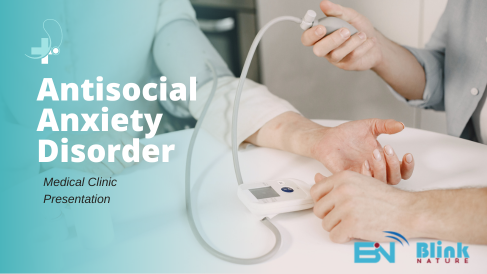
There are unseen struggles that many people with mental illness go through in silence. One such issue that affects many people is antisocial anxiety disorder, sometimes referred to as social anxiety disorder (SAD). The goal of this blog is to provide a clear summary of the subtleties of antisocial anxiety disorder, including its nature, symptoms, underlying causes, and available sources of support.
An extreme fear of social situations is at the center of antisocial anxiety disorder. It’s more complicated than just being shy; it’s a syndrome marked by a strong fear of being judged, criticized, or embarrassed in social situations. Even routine circumstances, such as meeting new people or speaking in front of an audience, can cause anguish and anxiety in those with SAD.
Antisocial anxiety disorder symptoms can appear both physically and emotionally. When confronted with social situations, people may physically tremble, sweat, beat more quickly, or feel sick. They struggle emotionally with great uneasiness, worry, and the continual conviction that they are being unfairly judged by others.
Antisocial anxiety disorder has several different antecedents. Its development may be influenced by genetics, abnormalities in brain chemistry, and stressful social experiences in the past. Some people may develop the illness as a result of a genetic predisposition mixed with particular life situations.
The condition starts a vicious loop that feeds on itself. Avoidance, which temporarily reduces anxiety, is the result of social anxiety. But over time, this avoidance feeds the anxiety and can lead to sadness, increased loneliness, and lowered self-esteem.
A professional evaluation is necessary for the diagnosis of antisocial anxiety disorder. There are numerous ways to manage it after a diagnosis:
Cognitive-Behavioral Therapy (CBT) is a highly successful form of therapy.
It enables people to recognize destructive thought patterns and gradually face their fears. Medication: In some circumstances, doctors may recommend drugs like SSRIs to treat symptoms.
Exercise, a healthy diet, and mindfulness exercises can help you manage the disorder.
Talking to people who have gone through similar things, whether in person or online, may be reassuring and enlightening.
To eliminate the stigma associated with mental health, including Antisocial Anxiety Disorder, education, and understanding are essential. Open dialogue can help create a society that is more sympathetic and encourages people to ask for assistance.
The disorder known as antisocial anxiety disorder is real and difficult to treat. Understanding its nuances will enable us to provide better assistance to those who are dealing with its effects. In order to provide an environment where everyone may succeed, regardless of their struggles with social anxiety, let’s build sensitivity and awareness.
Antisocial Anxiety Disorder, also known as Avoidant Personality Disorder, is a mental health condition characterized by pervasive feelings of social inadequacy, extreme self-consciousness, and intense fear of negative evaluation. People with this disorder tend to avoid social interactions and situations due to their overwhelming anxiety.
Common symptoms include avoiding social activities, low self-esteem, hypersensitivity to criticism, reluctance to take risks, fear of embarrassment, and difficulty forming close relationships. Physical symptoms like blushing, sweating, and trembling might occur in social situations.
While both disorders involve anxiety in social situations, social anxiety disorder primarily revolves around the fear of being negatively judged by others. Antisocial Anxiety Disorder goes beyond this fear to encompass a pervasive pattern of avoiding social interactions due to deep-seated feelings of inadequacy.
The exact cause isn’t known, but it’s believed to be a combination of genetic predisposition, childhood experiences (such as bullying or neglect), and a temperament prone to shyness. A history of excessive criticism or rejection can also contribute.
Yes, treatment is available. Psychotherapy, especially cognitive-behavioral therapy (CBT), is often recommended. CBT helps individuals challenge negative thought patterns and develop healthier coping strategies. Medications like antidepressants can also be prescribed in some cases.
There isn’t a definitive “cure,” but with appropriate treatment and support, individuals can learn to manage their symptoms effectively, improve their self-esteem, and develop healthier ways of interacting with others.
Prevention isn’t always possible, but early intervention in cases where individuals display signs of extreme shyness, social withdrawal, and avoidance behaviors can potentially help reduce the severity of the disorder’s impact.
Offer understanding and patience. Encourage them to seek professional help, but avoid pushing them into situations they find uncomfortable. Be a supportive listener and avoid judgment.
It’s estimated that around 2-5% of the population may experience Antisocial Anxiety Disorder. However, due to the nature of the disorder, many people might not seek treatment, leading to potential underreporting.
Absolutely. With appropriate treatment, support, and personal growth, individuals with Antisocial Anxiety Disorder can improve their social functioning, build meaningful relationships, and find ways to engage in activities that bring them joy and fulfillment.
Tags: antisocial anxiety disorder, causes, coping strategies, social anxiety, support, symptoms, treatment